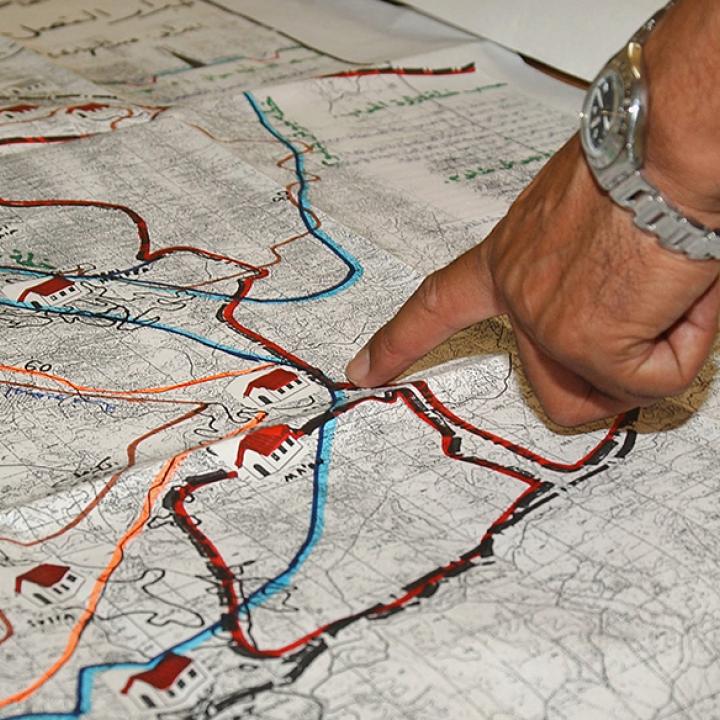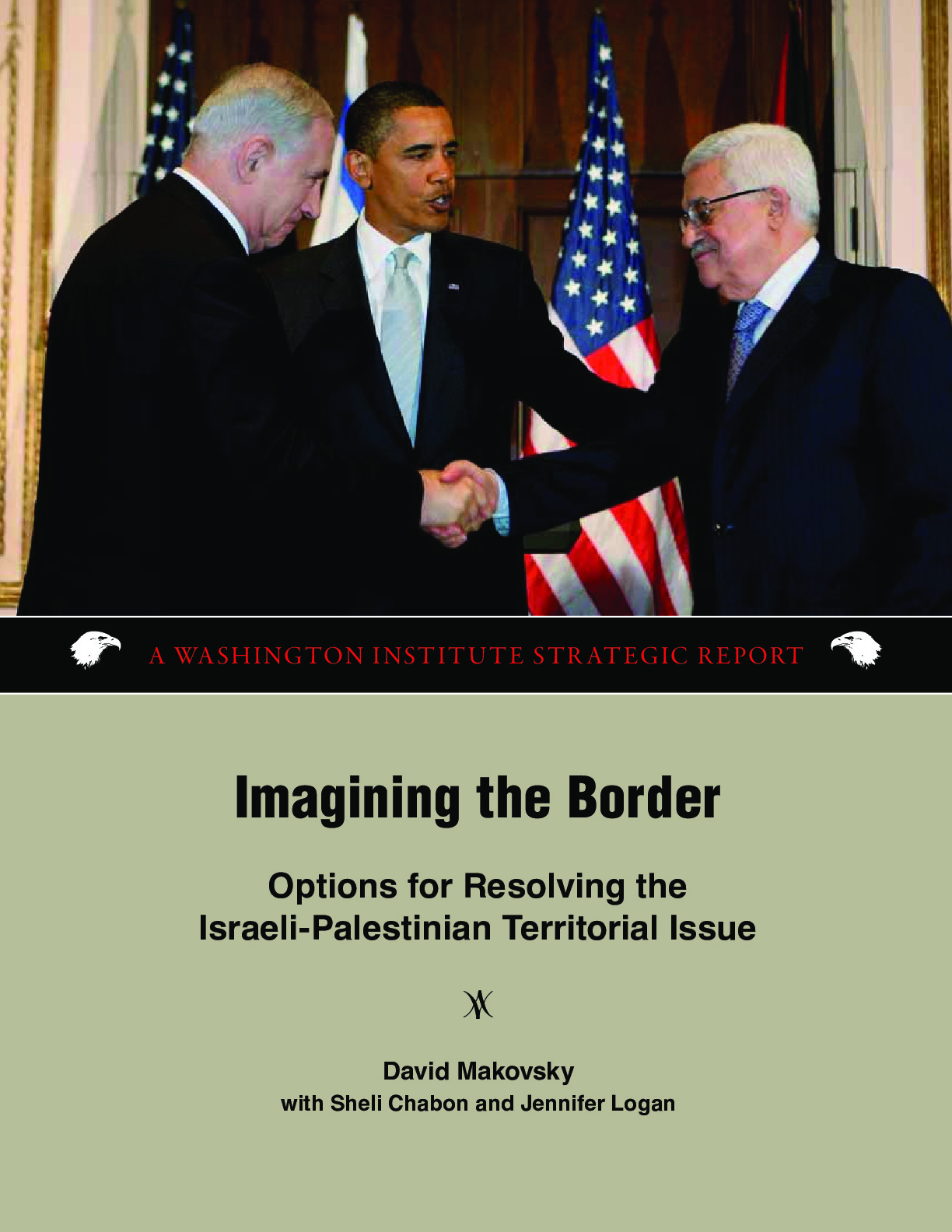
- Policy Analysis
- Strategic Reports 6
Imagining the Border: Options for Resolving the Israeli-Palestinian Territorial Issue

The impossible is indeed achievable. Middle East negotiators can adjust Israel's borders to include the large majority of West Bank settlers and still meet Palestinian Authority territorial demands. This proposition -- stemming from principles the two parties have repeatedly expressed as well as current realities on the ground -- may guide leaders and diplomats in the coming months as they seek to advance the peace process.
In this new Washington Institute report, David Makovsky analyzes the intersection of demography and geography in the West Bank in order to demystify the territorial dimension of the conflict and facilitate peacemaking. Through detailed maps and in-depth population data, he shows how the parties can use land swaps to meet some of their most important goals, such as minimizing dislocation, ensuring security, and establishing a contiguous Palestinian state in the West Bank. Territory is not the only issue on the peace agenda -- security, refugees, Jerusalem, and recognition of Israel's legitimacy are key -- but breakthrough on this issue may open the door to progress on the others.
Interactive Online Map
In conjunction with the publication of Imagining the Border, The Washington Institute announces the release of a landmark web resource: a fully interactive online map. Users can explore the report's various land swap proposals and see detailed information about every Israeli and Palestinian community in the West Bank. With satellite and terrain maps drawn from the most up-to-date Google Earth database, the interactive map permits users to examine these proposals from a local perspective, down to the level of individual streets and buildings. Data from the controversial Triangle option has been included for purposes of comparison.
Note: Users of Internet Explorer may need to install the Google Chrome Frame plugin to view the interactive map.
Individual Maps for Download
- Land Swap Option 1
- Land Swap Option 2
- Land Swap Option 3
- Geneva Land Swap Option
- Triangle Land Swap Option
- Triangle Detail
- East Jerusalem
THE AUTHORS
David Makovsky, Ziegler distinguished fellow and director of The Washington Institute's Project on the Middle East Peace Process, is also an adjunct lecturer in Middle East studies at Johns Hopkins University's School of Advanced International Studies. An award-winning journalist and former executive editor of the Jerusalem Post, he has achieved international recognition as an expert on Arab-Israeli affairs. Highly sought after as a radio and television commentator, Mr. Makovsky also contributes regularly to major print outlets such as the New York Times, Wall Street Journal, and Foreign Affairs. He is the author of numerous studies on Arab-Israeli relations, most recently the critically acclaimed Myths, Illusions, and Peace: Finding a New Direction for America in the Middle East, coauthored with Dennis Ross (Viking/Penguin, 2009).
Sheli Chabon and Jennifer Logan are recent Schusterman young scholars in the Project on the Middle East Peace Process at The Washington Institute.
-
42 PAGES


